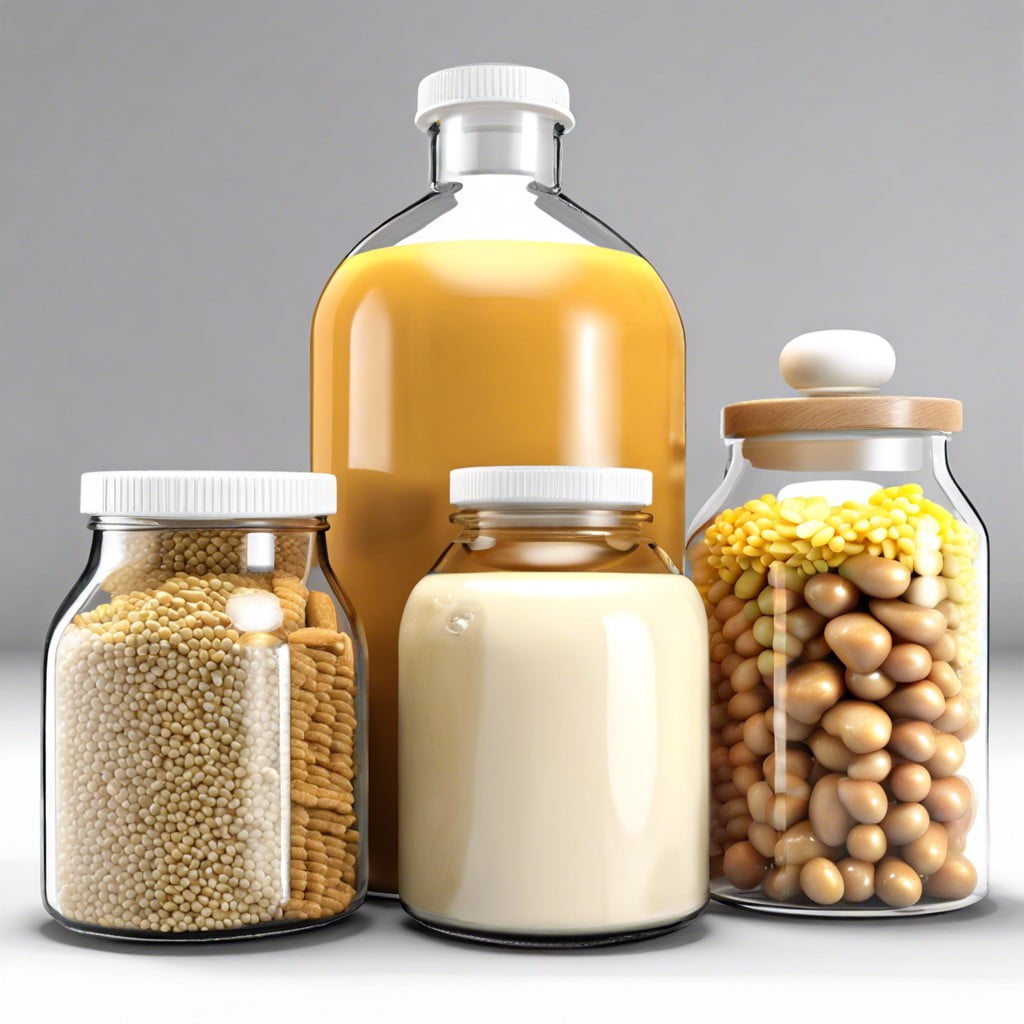Get ready to meet some amazing carbohydrate polymers, from the sturdy cellulose in plants to the versatile chitin in shellfish, and discover how these natural wonders are more than just chemistry class flashbacks!
Key takeaways:
- Carbohydrate polymers include starch, glycogen, cellulose, and chitin.
- Starch and glycogen are storage polysaccharides.
- Cellulose and chitin are structural polysaccharides.
- The Periodic Acid-Schiff (PAS) stain can identify polysaccharides.
- Carbohydrate polymers are used in biomedical, food, paper, textile, and nanotechnology industries.
Storage Polysaccharides: Starch, Glycogen

Imagine your body as a busy city, and your energy storage as its warehouses. For humans, glycogen plays this role. It’s like your body’s panic room for energy, stacking energy densely in liver and muscle cells for when you need a rapid power source during activities like sprinting or escaping a sudden rainstorm.
Plants have their own version, which is starch. Found in tons of our favorite carbs (hello, potatoes and rice!), starch acts as the plant’s energy bank. It’s why athletes often “carbo-load” before big events. By consuming starch, they’re essentially making a hefty deposit into their energy reserves.
Both starch and glycogen are made up of glucose units, but they store these units in different ways. Glycogen’s structure is highly branched, letting it break down quickly when it’s go-time, whereas starch varies – being either relatively compact unbranched chains (amylose) or mildly branched (amylopectin), making it a bit slower to break down. This structural tango is what makes them so effective at what they do. Just picture trying to pull a book from a well-organized shelf versus a heap on the floor — structure matters.
Structural Polysaccharides: Cellulose, Chitin
Cellulose and chitin serve as the building blocks for various natural structures and are prime examples of structural polysaccharides. Cellulose, found in the cell walls of plants, is what keeps plants sturdy and upright. Imagine celery sticks; they’re crisp because of cellulose. It’s not just about crunch, though – cellulose is also used to produce paper and certain types of fabrics, such as rayon.
Chitin, on the other hand, is mainly found in fungi and the exoskeletons of arthropods like crabs, lobsters, and insects. Ever wondered why shrimp shells are so tough to crack? Thank chitin for that. This biopolymer is not just about keeping bugs and crustaceans together; it also has applications in medicine for wound dressings due to its biocompatibility and biodegradability.
Both these polysaccharides showcase nature’s marvelous way of using similar building blocks to perform a variety of essential functions. From stiff plants to tough bug shells, it’s all about supporting structure!
Chemical Identification Tests for Polysaccharides: Periodic Acid-Schiff Stain (PAS)
Ever wondered how scientists spot those sneaky carbs in a complex biological matrix? Enter the hero of our story: the Periodic acid-Schiff (PAS) stain. This clever chemical test has a special affinity for polysaccharides. Here’s how it works: the test uses periodic acid to break down the glycol groups in polysaccharides, unveiling aldehyde groups. Next up, Schiff’s reagent jumps in. It forms a bright magenta color when it meets those aldehyde groups. Voilà! You can now see where the polysaccharides are hanging out under a microscope. It’s like a disco party for scientists, where the polysaccharides light up the dance floor! This method isn’t just a one-trick pony either; it’s also used to detect glycoproteins and mucopolysaccharides, making it a versatile tool in histology and pathology. So, next time you’re dazzled by vibrant microscope images, remember the PAS stain might just be behind that burst of color!
Common Applications of Carbohydrate Polymers
Carbohydrate polymers are quite the multitaskers in both nature and industry, popping up in places you might not expect! Here’s a peek at where these versatile materials make our lives easier:
Biomedical applications: They’re a hit in the medical field! Polysaccharides like chitosan are used in wound dressings due to their ability to promote healing. Plus, they’re biocompatible and non-toxic, making them body-friendly.
Food industry: Ever wonder why your jelly is wobbly? Thank starch and pectin, polysaccharides that are used as thickeners and gelling agents in foods. They make sure your pudding sets just right.
Paper production: Here, cellulose from trees comes into play. This polymer gives paper its strength and durability, letting you flip through your favorite book without a hitch.
Textile manufacturing: Carbohydrates polymers like cellulose are also stars in the textile industry. Rayon, a semi-synthetic fiber, is derived from cellulose, providing a silky yet affordable fabric option.
In essence, carbohydrate polymers are everywhere, and their versatility is key to their widespread use. From healing your cuts to keeping your food jiggly, they’ve got you covered.
Applying Carbohydrate Polymers to Nanotechnology
Carbohydrate polymers are stars in the nanotechnology universe, thanks to their biocompatibility and biodegradability. Imagine tiny structures, hardly visible to the naked eye, doing big jobs in medicine, electronics, and environmental protection!
First off, these polymers can create nifty nanogels. These are like little sponges that can deliver drugs directly to where they’re needed in the body. It’s like having a mini Uber for medicine, making sure it reaches the exact location without wandering off somewhere else!
They’re also used in making nanoparticles that help in gene delivery. This is crucial for therapeutic treatments like correcting genetic disorders. Think of it as fixing a typo in a very important email before sending it out.
Additionally, carbohydrate polymer-based nanostructures can be utilized in tissue engineering. They help in creating scaffolds that support the growth of new tissues. It’s a bit like setting up a tent for cells to camp out and multiply, helping heal damaged tissues.
These applications show just how versatile and essential carbohydrate polymers are in the advancing field of nanotechnology. It’s like having a Swiss Army knife in molecular form!
Recap




